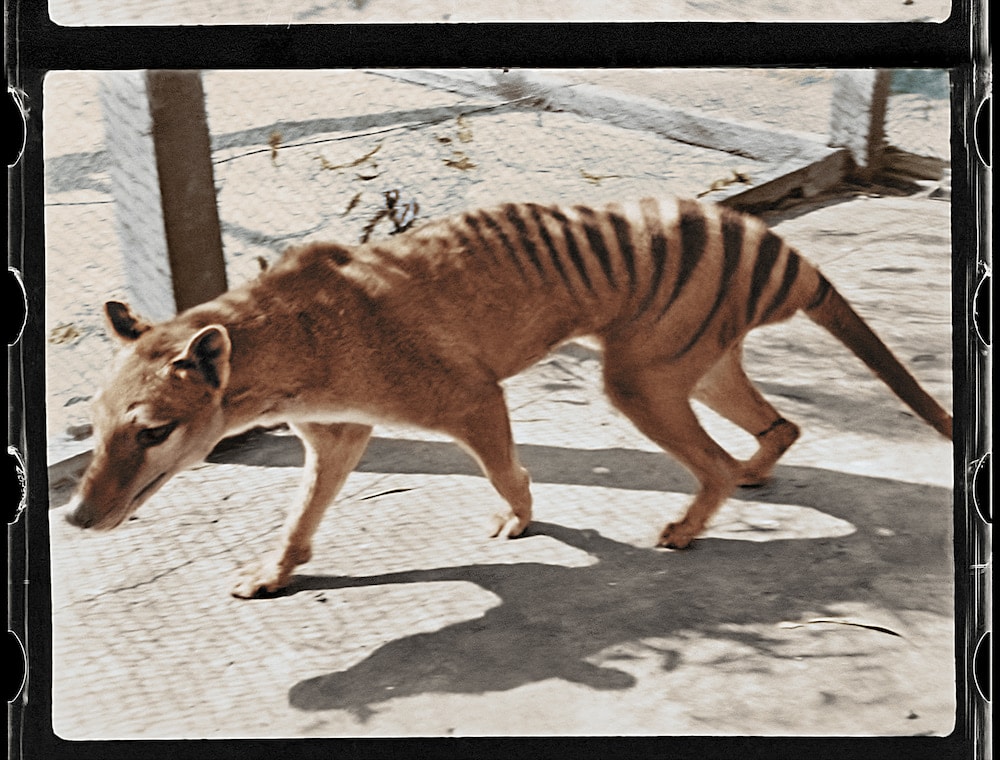More than 80 years ago today, the last Tasmanian tiger (or thylacine) died in a zoo. To commemorate that extinction, National Threatened Species Day raises awareness of other endangered plants and animals. Today, the National Film and Sound Archive of Australia (NFSA) released colourised footage of the last-known surviving Tasmanian tiger.
Filmed in 1933 by Australian zoologist and naturalist David Fleay, the footage – the longest known surviving film of the extinct marsupial – contains some of the most widely seen moving images of ‘Benjamin’, who died in captivity three years later, in 1936.
The NFSA recently scanned the original 35mm black-and-white negative to 4K archival standards, capturing this historic footage in greater detail. The digitised file was then delivered to colourisation experts in France, led by Paris-based Composite Films art director Samuel François-Steininger.
“I have worked on more than 100 archive-based documentary films and series, most of them very complex,” M. François-Steininger said. “But for the thylacine, I faced a different kind of challenge and responsibility: I had to take care of the rare footage, and pay tribute to the last representative of a species, which disappeared 85 years ago.”
The Composite Films team – a leader in the colourisation of archival footage – researched colours of the thylacine, then used cutting-edge technology for the colourisation process. Colourings were informed by drawings, sketches, and paintings, as well as by pelts preserved in various museums, and written descriptions of the thylacine’s coat.

Finding accurate colour references for the thylacine was a challenge, M. François-Steininger explained, due to the lack of original colour pictures or footage – so his team relied primarily on written descriptions of the thylacine’s coat to inform the tints and shades present on the animal’s fur.
“These descriptions, combined with scientific drawings, and recent 3D colour renderings of the animal, meant we were able to get a clear idea of what the thylacine’s fur should look like,” M. François-Steininger said.
NFSA curator Vick Gwyn hoped , said the digital preservation of the original black-and-white nitrate film brought a greater detail to the image. She hoped people would feel connected to the iconic footage and understand this remarkable animal.
Fewer than a dozen source films of the Tasmanian tiger, amounting to little more than three minutes of silent, black-and-white footage, survive. There is presently no other footage of the thylacine on colour film stock.
M. François-Steininger collaborated with Stranger than Fiction Films and the NFSA on the acclaimed series, Australia in Colour. Through Composite Films, he has developed a well-deserved reputation as a leader in the field of colourising black and white archival footage.
For more news:



